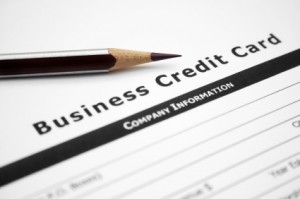 Some financial experts insist that the history of credit card companies goes back to the 1800s. That may very well be, but the data is sketchy in terms of whether the earliest credit cards were issued by single merchants for use at their businesses or banks offering more generalized credit. The best historical data we have goes back to the 1920s.
Some financial experts insist that the history of credit card companies goes back to the 1800s. That may very well be, but the data is sketchy in terms of whether the earliest credit cards were issued by single merchants for use at their businesses or banks offering more generalized credit. The best historical data we have goes back to the 1920s.
Our FREE credit card finder is one of the best ways for you to search online for your favorite credit cards!
To understand the history of credit card companies we must first understand the nature of credit. Prior to the 1800s, credit in America was somewhat limited. People tended to pay for goods and services either with cash or by bartering for other goods or services in exchange.
When credit was issued, it was generally not allowed to become revolving. In other words, if the owner of the general store extended credit for something you needed this month, he would not sell you anything next month until the balance was paid off.
Weren’t the first credit cards really merchant-based credit cards?
In a 2009 Time Magazine article entitled “A Brief History of: Credit Cards”, author M.J. Stephey asserts that the first credit cards were originally issued in the 1920s by hotel chains, gas stations, and individual merchants for the purpose of serving the traveling public. At that time, the proliferation of the automobile made traveling outside your local county the norm for many Americans. However, even back then people weren’t too keen on carrying cash.
By issuing a credit card for instance, a gas station chain could encourage loyalty among customers by allowing them to purchase gas during their travels without having to carry cash. When the hotel chains saw what a lucrative business this was they joined the fray as well. This was the beginnings of what has since evolved into a multi-billion dollar industry.
When was the first bank credit card issued?
 The origin of the bank credit card is a matter of some debate, primarily because of different definitions of the term credit card. But most experts agree that the concept of the bank credit card, whether a piece of wood, paper, or cardboard was actually used, goes back to 1946 and the Flatbush National Bank of Brooklyn, New York.
The origin of the bank credit card is a matter of some debate, primarily because of different definitions of the term credit card. But most experts agree that the concept of the bank credit card, whether a piece of wood, paper, or cardboard was actually used, goes back to 1946 and the Flatbush National Bank of Brooklyn, New York.
Apparently, the scheme was thought up by a bank employee by the name of John Biggins, who believed local businessmen could be prompted to spend more money in local neighborhoods if they were allowed to charge their purchases. His early credit card program utilized a paper slip the customer would sign when purchasing goods and services. That slip was then taken to the bank where it was processed and sent for payment.
How Flatbush National Bank made money on the program is not clear. It’s assumed they charged a transaction fee for credit card processing.
When was the first universal card issued?
A universal credit card is defined as one that can be used for multiple purposes, and at multiple establishments, by any customers and merchants enrolled in the program. Encyclopedia Britannica attributes the first universal credit card to Diners Club in the 1950s. However, two distinct features cause some in the industry to disqualify it as being the first universal credit card.
The first feature in question was that the card initially could only be used at restaurants. It has since expanded to include other types of establishments like gas stations and hotels, but the first incarnation was aimed squarely at restaurant dining.
The second feature was that consumers were not allowed to carry a credit card balance from one month to the next. The balance had to be paid in full at the end of every billing cycle. For some, this technicality makes the Diners Club charge card a charge card rather than a credit card.
How have credit cards evolved over the years?
To be sure, the credit cards of 2012 are certainly not the same as those used by our parents and grandparents. The early days of credit cards were such that many people considered them anathema. Only the wealthy had credit cards; only the wealthy needed the convenience offered by carrying them instead of cash. The average consumer on the street very rarely used revolving credit prior to the 1950s.
Today it’s not uncommon for the average consumer to have three or four credit cards in a wallet or purse. It’s also no secret that most credit card users today carry balances from one month to the next in a process that goes on for years.
You can quickly and easily search for credit card rates by using our FREE credit card finder!








